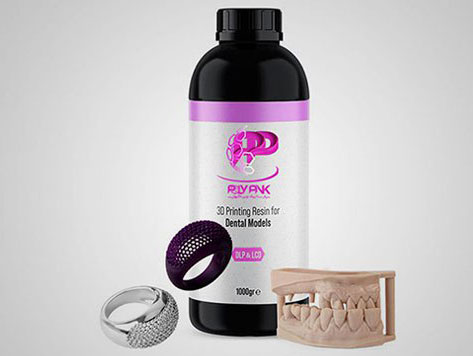Parsa Ipek Novin Keyhan Knowledge-based Company produces polymer and ceramic inks for 3D printers

The production of polymer and ceramic inks used in 3D printers inside Iran has reduced the country’s need for imports of this key product. In recent years, optical printers have been more widely used in Iran than other printers due to their high printing precision.
The popularity of these printers has increased demand for printing raw materials in various industries. Failure of sanctions and production of raw materials for 3D printers
During this period, imports of raw materials were carried out by optical printer manufacturing companies. But the anti-Iran sanctions have been a major obstacle to the import of these materials.
The main drawback to printers made from those imported raw materials is their fragility and lack of good resistance to impact. Meanwhile, the high costs of this product that are due to imports have prevented an increase in the use of printers and the supply of raw materials for their production has turned into a key concern of consumers.
Production of ceramic resin used in 3D printers
The foregoing problems prompted Parsa Ipek Novin Keyhan Knowledge-based Company to do reverse engineering on foreign products with the aim of determining the proper formulation of the resins and improving the mechanical properties through changing the structure and also trying to replace its raw materials with those that exist inside Iran. This enabled the company to produce printer resins and quality products at reasonable prices.
This product is a ceramic resin used in 3D printers. The producer of the resins is very careful about their main properties during their production. One aspect is the curing time which has been decreased considerably. This in turn has reduced the printing time of the sample, improving the mechanical properties of the sample like brittleness.
Planning for export of polymer and ceramic inks for 3D printers
Given the current situation in Iran, the synthesis of some raw materials will prevent the outflow of foreign currency, and in the near future we can even be hopeful that this product will generate foreign currency.
This Company has managed to create formulations and laboratory samples of polymer and ceramic resins for 3D printers.
Efforts to produce other types of resin for 3D printers
Meanwhile, the high demand and consumption of this product in the market has prompted this company to try and produce other types of 3D printer resins such as castable and bio ones for medical, decorative and jewelry purposes.
These resins are widely used in the manufacture of molds and for machining as well as in rubber and casting, optical equipment, electrical and auto parts’ compartments, and dental as well as bone composites.






